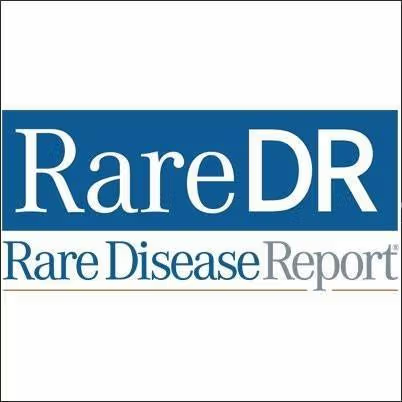Article
Disease-Modifying Therapies of MS Reduce Persistent Disability Risk
Author(s):
Disease-modifying therapies for relapsing-remitting MS were shown to reduce risk of conversion to secondary progressive MS.

Disease-modifying therapies (DMTs) for relapsing-remitting multiple sclerosis (MS) were shown to reduce risk for deterioration into the persistent disabilities of secondary progressive MS, which occurs in 80% of untreated patients within 2 decades of disease onset.
An international cohort study that prospectively collected clinical data for a minimum of 4 years (median 5.8 years) in more than 1500 patients found that DMTs reduced risk of conversion to secondary progressive MS compared to no treatment; that fingolimod (Gilenya), alemtuzumab (Lemtrada), and natalizumab (Tysabri) were more effective in reducing risk than glatiramer acetate or interferon beta. All studied DMTs were more effective in reducing this risk if initiated within 5 years of disease onset.
Tomas Kalincik, MD, PhD, of the Clinical Outcomes Research Unit at Melbourne Hospital, and colleagues of the MSBase Study Group, point out that until this present study, the association between DMTs and the conversion to secondary progressive MS had rarely been studied, and never before using a validated definition of the secondary progressive phase.
"Until recently, no rigorous definition of secondary progressive MS existed, leading to varying criteria and contradictory results from 1 randomized trial extension and 7 observational studies that predominantly examined the association of interferon beta or glatiramer with conversion to secondary progressive MS," Kalincik and colleagues observed.
In this MSBase study, involving 105 centers in 29 countries, and 5 European non-MSBase sites that were using alemtuzumab before it was licensed, 1555 patients with relapsing-remitting MS were identified with at least 1 Expanded Disability Status Scale (EDSS) score within 6 months before baseline, and at least 2 EDSS scores after baseline. Patients were excluded if they stopped taking their initial DMT within 6 months, as that period is considered necessary for some treatments to have full effect.
If patients received multiple DMTs, the first was used for the comparative analyses; other than with escalation from glatiramer acetate or interferon beta to fingolimod, alemtuzumab or natalizumab, which were then included in the comparison of treatments by initiation before or after 5 years from disease onset.
For the matching cohort of untreated patients, the baseline date was the visit date when clinical and demographic parameters most closely matched the corresponding baseline values of individual treated patients.
Investigators reported that initial treatment with fingolimod, alemtuzumab or natalizumab was associated with a lower risk of conversion to secondary progressive MS than initial treatment with glatiramer acetate or interferon beta (HR 0.66; 95% Confidence Interval [CI] 0.44-0.99). The 5-year absolute risk with these more potent DMTs was 7% (16 of 235) vs 12% (46 of 380).
Escalating treatment from glatiramer acetate or interferon beta to fingolimod, alemtuzumab or natalizumab within 5 years of disease onset was more effective in reducing risk of conversion than waiting longer than 5 years, with HR 0.76 (CI 0.66-0.88) and absolute risk of 8% (25 of 307) vs 14% (46 of 331).
Patients initially treated with glatiramer acetate or interferon beta had a lower hazard of conversion to secondary progressive MS than matched untreated patients (HR, 0.71; CI 0.61-0.81) with 5-year absolute risk of 12% (49 of 407) compared to 27% (56 of 174).
Fingolimod was associated with HR of 0.37 (CI 0.22-0.62) and 5-year absolute risk of 7% (6 of 85) compared to 32% (56 of 174) among untreated. Natlizumab had HR 0.61 (CI 0.43-0.86) and 5-year absolute risk of 19% (16 or 82) vs 38% (62 of 164) in untreated. Alemtuzumab had HR of 0.52 (CI 0.32-0.85) with 5-year absolute risk of 10% compared to 25% (23 of 92) untreated.
In an accompanying editorial, Harold Atkins, MD, Ottawa Hospital Blood and Marrow Transplant Program at the Ottawa Hospital Research Institute, emphasized that although the DMTs may result in prolonged suppression of clinical signs of MS activity in some patients, overall, they slow rather than halt MS.
"Furthermore, DMTs require long-term administration, may cause intolerable adverse effects that can lead to significant deterioration in a patient's quality of life beyond the manifestations of disease, and can lead to serious complications," Atkins cautioned.
Having quantified the extent that different DMTs can slow the progression of MS, however, Kalincik and colleagues suggest, "these findings, considered along with these therapies' risks, may help inform decisions about DMT selection."
The study, “Association of Initial Disease-Modifying Therapy with Later Conversion to Secondary Progressive Multiple Sclerosis”, was published in the Journal of The American Medical Association.





